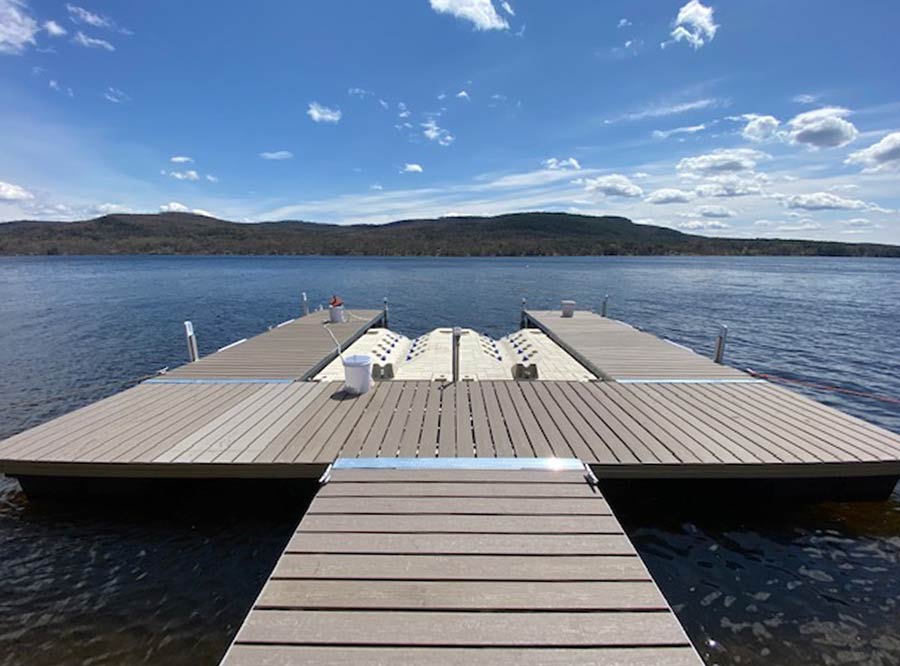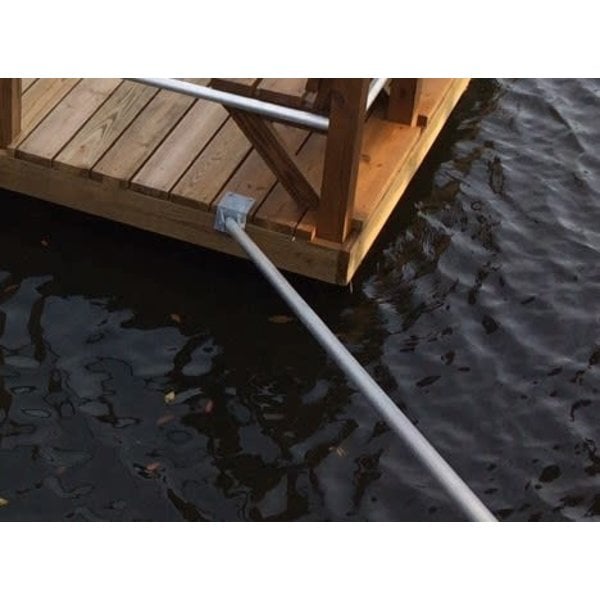Find the Perfect Floating Dock Builder to Bring Your Waterfront Vision to Life
Develop the Perfect Docking Option With Floating Docks
Floating docks present a flexible service for a variety of maritime demands, adjusting seamlessly to rising and fall water levels and varied vessel kinds. As we discover the essential aspects that contribute to the efficiency of floating docks, several key aspects concerning security and upkeep will emerge, increasing questions regarding how to maximize your docking experience.

Benefits of Floating Docks
Floating docks offer numerous advantages that make them an optimal choice for numerous maritime applications. Unlike dealt with docks, floating docks rise and autumn with the tide, making sure constant ease of access for vessels.
In addition, floating docks are usually much easier and quicker to set up compared to traditional fixed structures. Their modular layout enables uncomplicated setting up and disassembly, assisting in upkeep and relocation when needed. This adaptability is particularly helpful for short-term applications or in settings where problems might change.
Floating docks additionally tend to be much more ecologically friendly, as they reduce disturbance to the seabed and bordering marine environments. Their resilient nature decreases the risk of damages to aquatic life, promoting a healthier atmosphere. In addition, these docks can be tailored to suit different vessel dimensions, guaranteeing that they fulfill particular functional requirements - floating dock builder.
Inevitably, the combination of flexibility, simplicity of installment, and environmental considerations makes floating docks a very reliable option for a vast array of maritime needs.
Choosing the Right Materials
Picking the proper products for floating docks is critical to guarantee longevity, stability, and durability. The option of products directly influences the dock's efficiency in different ecological conditions, consisting of direct exposure to water, sunlight, and prospective wear from aquatic traffic.
Usual materials made use of for floating docks include light weight aluminum, timber, and high-density polyethylene (HDPE) Light weight aluminum is lightweight, corrosion-resistant, and needs minimal maintenance, making it an excellent option for longevity. Nonetheless, its first price can be greater contrasted to other products.
Timber, while cosmetically appealing and giving a conventional appearance, can be vulnerable to rot and pest damages if not effectively treated. Therefore, using pressure-treated timber or naturally durable types like cedar or redwood can reduce these concerns.
HDPE is a popular option because of its resistance to UV rays and chemicals, along with being eco-friendly. floating dock company. It is lightweight and readily available in numerous shades, permitting modification
Ultimately, the right product option will certainly depend upon certain demands, including budget, desired aesthetic appeals, and environmental factors to consider. Cautious analysis of these elements will certainly lead to a successful and durable floating dock option.
Layout Factors To Consider for Stability
When making floating docks, guaranteeing stability is a basic aspect that can substantially influence their performance and safety. Security in floating dock style is affected by different variables, including buoyancy, weight distribution, and the plan of elements.
Weight circulation is vital; evenly distributing lots throughout the dock prevents tilting and boosts security. Bigger designs can supply increased stability, especially in harsh water problems, while longer docks may need additional assistances to prevent sagging.
One more crucial consideration is the environmental effect, consisting of wave activity and wind. Including attributes such as sidewalls or skirting can help minimize the results of environmental forces, maintaining security in negative problems. Inevitably, a mix of thoughtful design, product choice, and understanding of ecological variables will certainly yield a floating dock that meets both stability and safety and security needs.
Setup Tips and Methods

Following, secure the required licenses and stick to regional laws, which may determine installation approaches and ecological factors to consider. Involve a certified service provider experienced in floating dock installments if called for. Use high-grade products designed for aquatic settings to boost durability and long life.
When placing the dock, align it parallel to the coastline to facilitate very easy gain access to. Make certain that the anchoring system is robust, utilizing concrete blocks or helical supports to maintain the dock versus wind and wave activity. It's essential to account for seasonal water level variations, including possible ice activity in chillier climates.
During the setup, ascertain the dock's floatation and stability prior to settling the anchoring. On discover this a regular basis examine the installment for any kind of signs of wear or damages. By complying with these strategies and suggestions, you can accomplish a protected, practical, and visually pleasing floating dock installation that satisfies your needs.
Upkeep and Treatment Guidelines
Caring and preserving for floating docks is crucial to prolonging their lifespan and making certain risk-free use. Routine inspections should be carried out to recognize any type of indicators of wear, damages, or marine development. Seek fractures, loose fittings, or stained locations on the dock's surface, as these issues can compromise structural honesty.
Cleansing is essential. Use a pressure washer to remove algae, barnacles, and debris, which can gather with time. For persistent development, consider eco-friendly cleaner that will not hurt water life.
In addition, check the mooring lines and supports frequently to guarantee they are totally free and safe from corrosion. Replace any torn or damaged lines promptly to preserve security.
Throughout extreme climate, such as storms or freezing problems, take precautionary procedures. Secure the dock with extra mooring lines and, if viable, eliminate any type here are the findings of detachable parts to avoid damages.
Conclusion
In verdict, the implementation of floating docks offers a efficient and versatile docking solution ideal for numerous maritime applications. With appropriate setup and routine upkeep, floating docks can provide efficient and reputable docking experiences for a wide range of vessels.
As we explore the vital components that add to the performance of floating docks, numerous key variables concerning stability and maintenance will certainly arise, increasing questions concerning how to maximize your docking experience. Unlike dealt with docks, floating docks surge and loss with the tide, ensuring regular accessibility for vessels.When developing floating docks, making certain stability is a basic element that can dramatically influence their functionality and safety and security. Stability in floating dock design Get the facts is affected by various elements, including buoyancy, weight circulation, and the setup of parts. Eventually, a mix of thoughtful design, material choice, and understanding of environmental elements will certainly yield a floating dock that meets both security and safety and security needs.